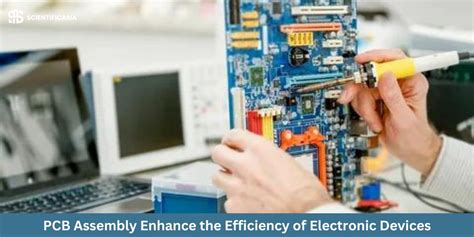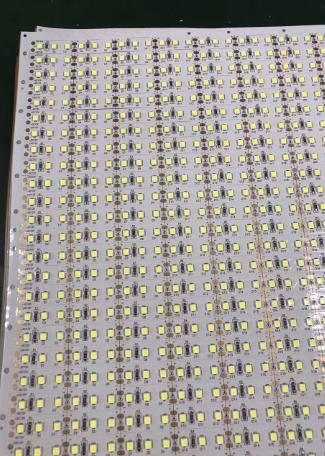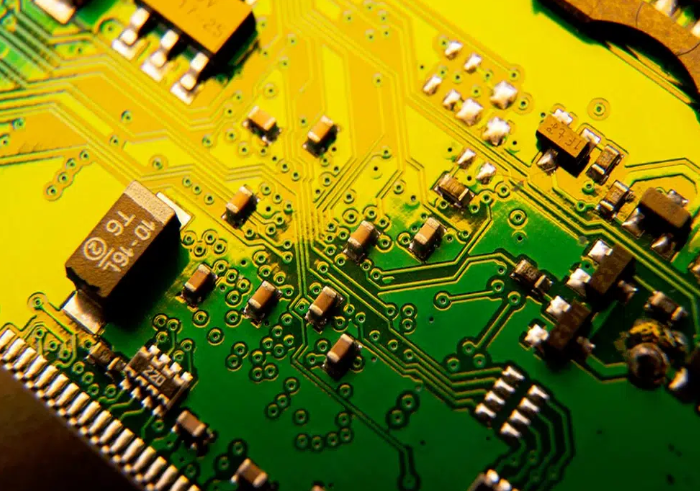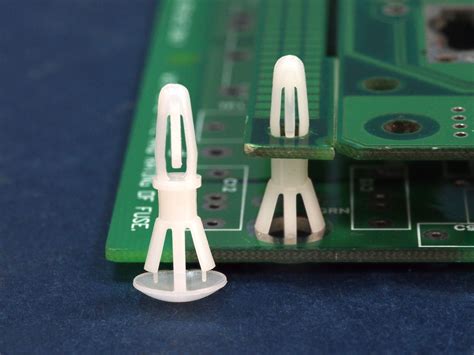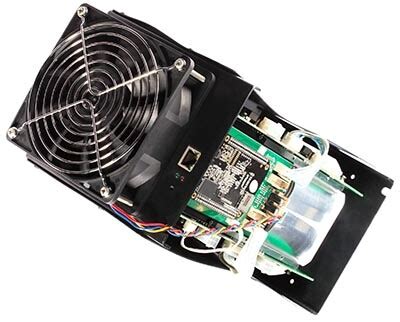Automated Electronic PCB Assembly Systems
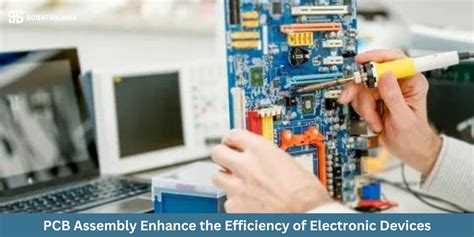
Key Takeaways
Automated PCB assembly systems have revolutionized electronics manufacturing by delivering unmatched efficiency and consistency These systems integrate PCBA processes—from solder paste application to component placement—with precision robotics, reducing human error by up to 85% compared to manual methods
Tip: When evaluating automation, prioritize systems with real-time quality monitoring to ensure defects are caught during PCB assembly, not post-production
Key advantages include:
| Aspect | Automated Systems | Manual Assembly |
|---|---|---|
| Speed | 200–500 boards/hour | 20–50 boards/hour |
| Defect Rate | 01% | 2–5% |
| Scalability | High (24/7 operation) | Limited by labor |
Advanced PCBA technologies like automated optical inspection (AOI) and surface-mount technology (SMT) enhance reliability, particularly in high-density interconnect (HDI) designs While initial investment costs are higher, automated systems achieve ROI within 12–18 months through reduced rework and faster throughput
Suggestion: Pair PCB assembly automation with modular design principles to simplify upgrades as new components enter the market
The shift toward automation also addresses labor shortages, enabling manufacturers to focus engineers on R&D rather than repetitive tasks However, selecting the right system requires aligning specifications with product complexity—over-engineering can negate cost benefits
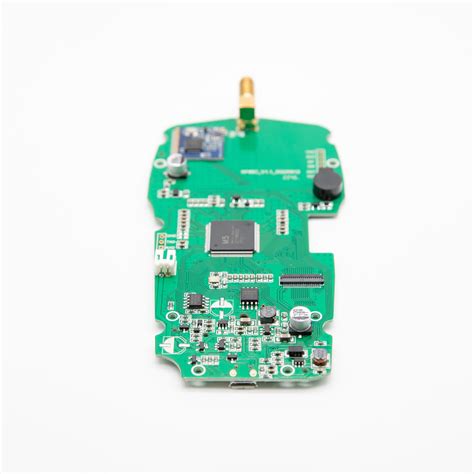
Automated PCB Assembly Efficiency Benefits
The adoption of automated PCB assembly systems has revolutionized production workflows by significantly accelerating manufacturing timelines Unlike manual processes, which rely heavily on labor-intensive tasks, robotic placement machines and AI-driven inspection tools ensure consistent throughput while minimizing human error For instance, PCBA lines equipped with advanced surface-mount technology (SMT) can populate hundreds of components per hour with micron-level accuracy, a feat unattainable through traditional methods This operational efficiency directly translates to faster time-to-market for electronics manufacturers, particularly in high-volume sectors like consumer electronics or automotive systems
By integrating real-time monitoring software, these systems optimize material usage and reduce waste—critical factors in cost-sensitive industries Additionally, automated workflows enable seamless scalability, allowing factories to adjust production capacity without compromising precision The elimination of repetitive manual tasks also reduces workplace fatigue, further enhancing overall output quality Notably, PCB assembly automation supports 24/7 operations, leveraging machine learning algorithms to predict maintenance needs and prevent unplanned downtime Such advancements not only elevate productivity but also create a foundation for continuous process improvement, ensuring manufacturers remain competitive in an era where speed and reliability define market success
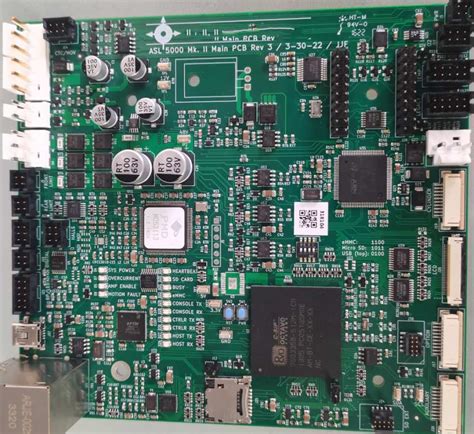
Precision Engineering in Modern PCB Manufacturing
The evolution of PCB assembly processes has been fundamentally shaped by advancements in precision engineering Modern automated systems leverage high-resolution optical alignment and micro-scale component placement to achieve tolerances as tight as ±0025mm, ensuring flawless integration of complex circuits At the heart of this transformation lies automated optical inspection (AOI) and laser-assisted soldering, which eliminate human error while maintaining sub-micron accuracy across multilayer boards
These innovations are particularly critical for PCBA (printed circuit board assembly) applications in aerospace and medical devices, where even minor deviations can compromise performance Advanced pick-and-place robotics, equipped with AI-driven vision systems, now handle components as small as 01005 packages (04mm x 02mm), enabling denser and more reliable designs Additionally, real-time feedback loops in reflow ovens dynamically adjust thermal profiles to prevent warping or solder bridging
By integrating precision-engineered workflows, manufacturers reduce rework rates by up to 70% while accelerating throughput This synergy of accuracy and efficiency underscores why automation is indispensable in meeting the escalating demands for miniaturized, high-performance electronics

Reliability Advancements in Electronic Assembly Systems
Modern PCB assembly processes have achieved unprecedented reliability through innovations in error-detection algorithms and adaptive process controls Automated PCBA systems now integrate real-time monitoring tools that analyze solder joint integrity, component alignment, and thermal stress distribution with micron-level precision For instance, AI-powered optical inspection systems detect defects such as tombstoning or bridging within milliseconds, reducing production errors by over 40% compared to manual methods
Another critical development is the adoption of self-correcting machinery in electronic PCB assembly lines These systems automatically adjust placement pressure, soldering temperature, and conveyor speed based on live feedback from embedded sensors This dynamic optimization minimizes variability caused by environmental factors or material inconsistencies, ensuring consistent output even during high-volume production
Moreover, advancements in conformal coating application and moisture-resistant substrates have significantly enhanced the long-term durability of PCBA units By leveraging hydrophobic materials and robotic spray systems, manufacturers achieve uniform protective layers that withstand harsh operating conditions—from industrial IoT devices to aerospace electronics Such innovations not only extend product lifespans but also reduce warranty claims by up to 30%, reinforcing trust in automated PCB assembly solutions
These reliability improvements align with the broader shift toward smart manufacturing ecosystems, where data-driven insights continuously refine production workflows As a result, industries requiring mission-critical electronics—such as medical devices and automotive systems—increasingly prioritize automated PCBA technologies for their predictable performance and traceable quality metrics
Core Technologies Powering Automated PCB Assembly
At the heart of modern PCB assembly workflows lie advanced technologies that enable unprecedented precision and scalability Surface-mount technology (SMT), a cornerstone of PCBA automation, utilizes high-speed robotic placers to position components with micron-level accuracy, achieving placement speeds exceeding 30,000 parts per hour These systems integrate machine vision for real-time component verification, ensuring alignment tolerances as tight as ±25μm
Complementing SMT, automated optical inspection (AOI) systems employ multispectral imaging to detect soldering defects or misplaced components at rates unattainable through manual checks For complex multilayer boards, laser drilling and 3D solder paste inspection (SPI) further enhance process reliability by validating pad geometries and solder volume distribution before reflow stages
Emerging innovations like AI-driven predictive maintenance analyze equipment performance data to preemptively address calibration drift in PCB assembly lines, reducing downtime by up to 40% Meanwhile, closed-loop feedback systems synchronize pick-and-place robots with conveyorized soldering ovens, creating seamless production flows ideal for high-mix, high-volume PCBA manufacturing These technologies collectively address the dual demands of miniaturization in consumer electronics and ruggedization requirements for industrial applications, forming the backbone of next-generation electronics production ecosystems
Automated Systems vs Manual PCB Assembly Comparison
The shift toward automated PCB assembly systems has redefined production benchmarks, yet manual processes retain niche applications in specific scenarios Speed and repeatability form the cornerstone of automated PCBA, with robotic pick-and-place machines achieving placement rates exceeding 25,000 components per hour—a feat unattainable through manual labor Automated workflows minimize human error, ensuring PCB assembly consistency even for complex designs with ultra-fine-pitch components or high-density interconnects (HDIs)
In contrast, manual assembly remains viable for prototyping or low-volume batches requiring frequent design iterations Technicians can adapt quickly to last-minute changes without reprogramming machinery, offering flexibility that automation struggles to match However, this approach faces limitations in scaling production, as prolonged manual soldering increases risks of cold joints or misaligned components
Modern hybrid models bridge this divide, combining automated PCBA lines for bulk processes with manual stations for specialized tasks like connector installation or visual inspections While automated systems dominate high-volume manufacturing—delivering 9999% accuracy rates—the choice ultimately hinges on project complexity, budget constraints, and throughput requirements Transitioning between these methods demands careful evaluation of ROI timelines and technical feasibility to optimize electronics production outcomes
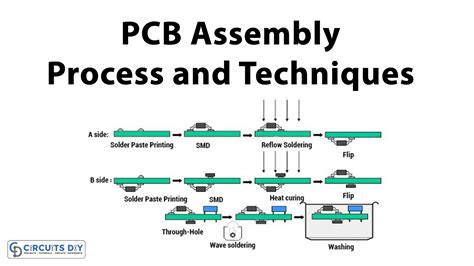
Cost-Effectiveness of Automated Electronics Production
The adoption of automated PCB assembly systems delivers significant cost advantages across modern electronics manufacturing workflows While initial investments in PCBA automation technologies may appear substantial, the long-term savings stem from reduced labor expenses, minimized human error, and enhanced production scalability Automated pick-and-place machines, for instance, achieve consistent component placement accuracy, slashing material waste caused by misaligned solder joints or misplaced parts This precision directly translates to lower rework rates and higher first-pass yields—critical factors in high-volume PCB assembly environments
Moreover, automated systems optimize resource utilization by operating continuously with minimal downtime, effectively lowering per-unit costs as production scales Advanced vision systems and real-time quality monitoring further reduce defects, preventing costly post-production fixes When compared to manual PCBA processes, automation eliminates variability in labor output, ensuring predictable throughput even for complex, multi-layer boards
Transitioning to automated workflows also future-proofs manufacturing operations by enabling rapid adaptation to design changes or new product introductions This agility reduces time-to-market penalties and mitigates risks associated with manual retooling By balancing upfront capital expenditures with sustained operational efficiencies, manufacturers achieve a compelling ROI that strengthens competitiveness in fast-paced electronics markets
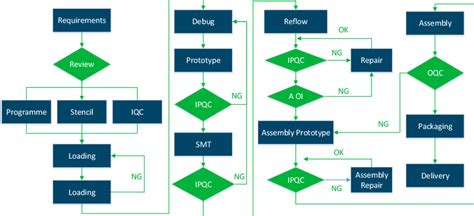
Future Trends in PCB Assembly Automation
The evolution of PCB assembly automation is accelerating, driven by advancements in machine learning, IoT integration, and sustainable manufacturing practices Industry experts predict a shift toward AI-driven optical inspection systems, which will enhance defect detection accuracy in PCBA workflows by analyzing micro-scale anomalies in real time Hybrid manufacturing models, combining collaborative robots (cobots) with human oversight, are gaining traction to balance high-volume production with complex customization demands
Another emerging trend is the adoption of digital twin technology, enabling virtual simulations of PCB assembly lines to optimize material usage and reduce prototyping cycles Sustainability is also reshaping automation priorities, with manufacturers investing in energy-efficient soldering systems and lead-free material handling protocols Additionally, modular automation platforms are being designed to support rapid reconfiguration for diverse PCBA product batches, minimizing downtime during transitions
As 5G and edge computing mature, embedded sensors in automated PCB assembly equipment will enable predictive maintenance, cutting unplanned outages by up to 30% These innovations underscore a broader industry focus on scalability and resilience, ensuring automated systems remain adaptable amid fluctuating component supply chains and evolving regulatory standards
Choosing the Right Automated Assembly Solution
Selecting an optimal automated PCB assembly system requires balancing technical specifications, production demands, and long-term scalability High-mix production environments, for instance, benefit from PCBA solutions with modular configurations and flexible feeders to accommodate diverse component types Conversely, high-volume manufacturers might prioritize throughput speed and multi-stage inspection capabilities to minimize downtime Key considerations include compatibility with surface-mount technology (SMT), precision placement accuracy (measured in micrometers), and integration with existing enterprise resource planning (ERP) systems
Transitioning to automation also demands evaluating software ecosystems: advanced PCB assembly platforms leverage AI-driven process optimization and real-time analytics to preempt defects For businesses aiming to reduce time-to-market, systems with closed-loop feedback mechanisms ensure consistent quality across batches However, cost factors like initial investment, maintenance, and operator training must align with ROI projections By aligning technical capabilities with operational goals, manufacturers can implement PCBA solutions that enhance both productivity and product reliability, seamlessly bridging earlier discussions on precision engineering and future automation trends
Conclusion
The integration of automated electronic PCB assembly systems marks a transformative shift in manufacturing workflows, combining speed, accuracy, and repeatability at unprecedented levels By leveraging advanced technologies like surface-mount technology (SMT) and automated optical inspection (AOI), modern PCBA processes ensure minimal human error while maximizing throughput These systems not only address the growing demand for complex, high-density boards but also enable manufacturers to adapt swiftly to evolving market requirements
When evaluating automated PCB assembly solutions, it’s critical to prioritize scalability and flexibility—key drivers for long-term competitiveness While automation reduces labor costs and cycle times, its true value lies in enhancing product consistency across large-scale production runs As industries move toward smart factories and IoT-enabled workflows, the role of PCBA automation will expand, integrating predictive maintenance and AI-driven quality control Ultimately, adopting these systems is less about replacing human expertise and more about augmenting precision engineering with tools that redefine what’s possible in electronics manufacturing
Frequently Asked Questions
How does automation improve efficiency in PCB assembly?
Automated PCBA systems utilize robotic placement and AI-driven inspection to reduce human error, enabling 24/7 production cycles and faster throughput This minimizes downtime and optimizes resource allocation
What ensures precision in modern electronic PCB assembly?
Advanced PCB assembly workflows integrate automated optical inspection (AOI) and X-ray computed tomography (XCT) to detect micron-level defects These technologies ensure alignment accuracy for components as small as 01005 packages
Are automated systems more reliable than manual PCBA methods?
Yes Automated PCB assembly eliminates variability in solder paste application and component placement, achieving 9999% repeatability Closed-loop feedback systems further enhance reliability by adjusting parameters in real time
How cost-effective is transitioning to automated electronic assembly?
While initial investments are higher, automated PCBA reduces long-term costs through lower defect rates (under 01%) and reduced rework Scalability also allows manufacturers to adapt to demand fluctuations without labor constraints
What future trends will shape PCB assembly automation?
Expect tighter integration of IoT-enabled predictive maintenance and machine learning algorithms for defect forecasting Hybrid systems combining flexible robotics with modular tooling will also dominate high-mix production environments
Explore Customized PCB Assembly Solutions
For tailored automated PCBA systems that align with your production goals, please click here to consult our engineering team

